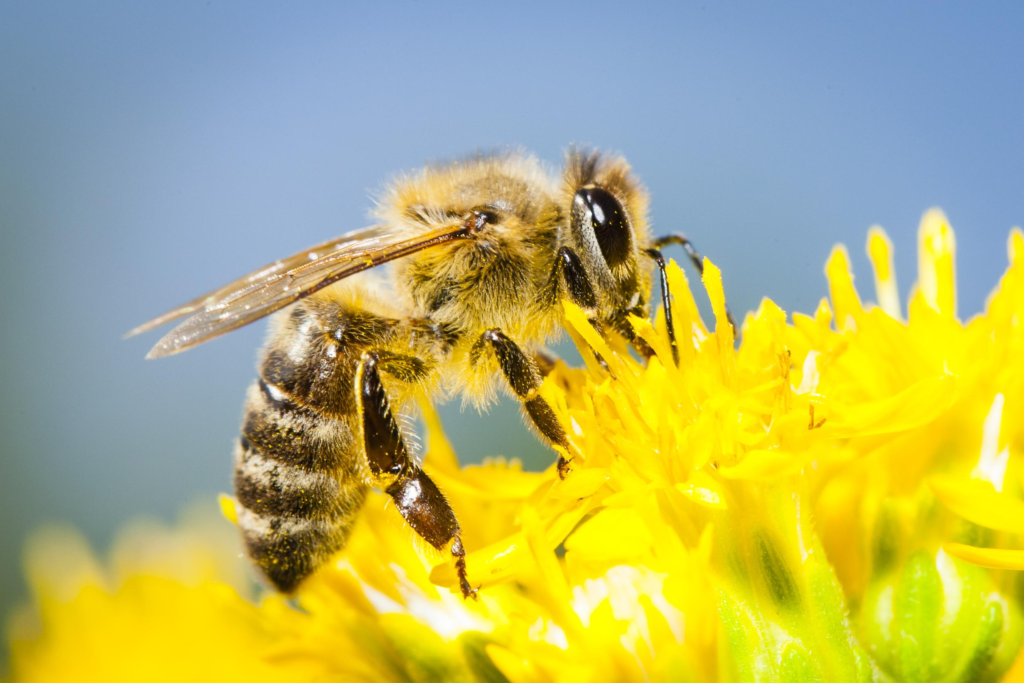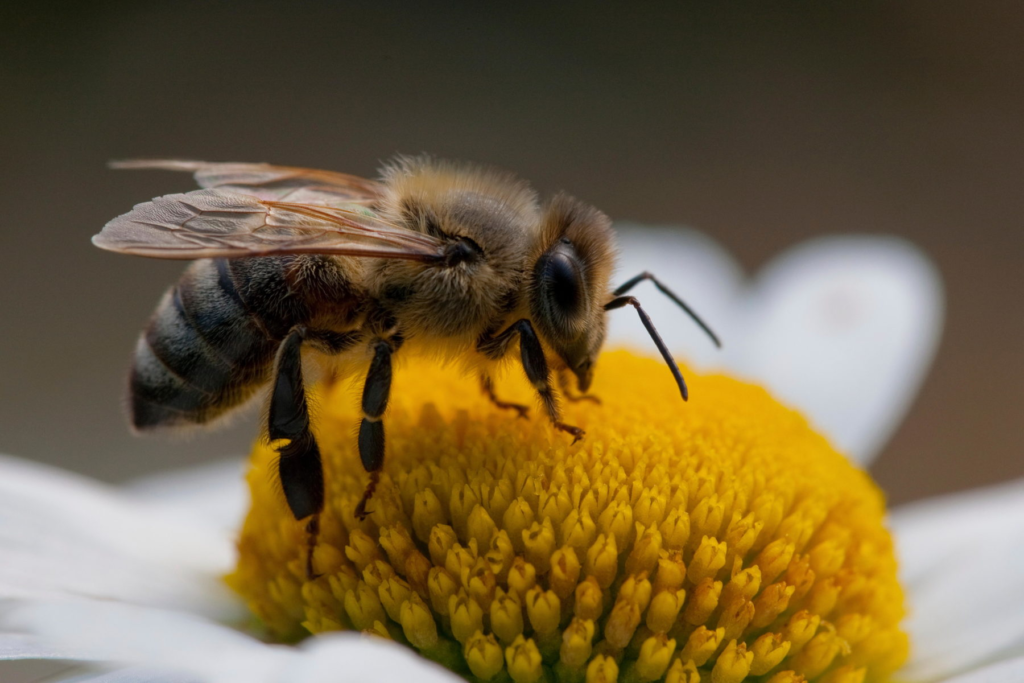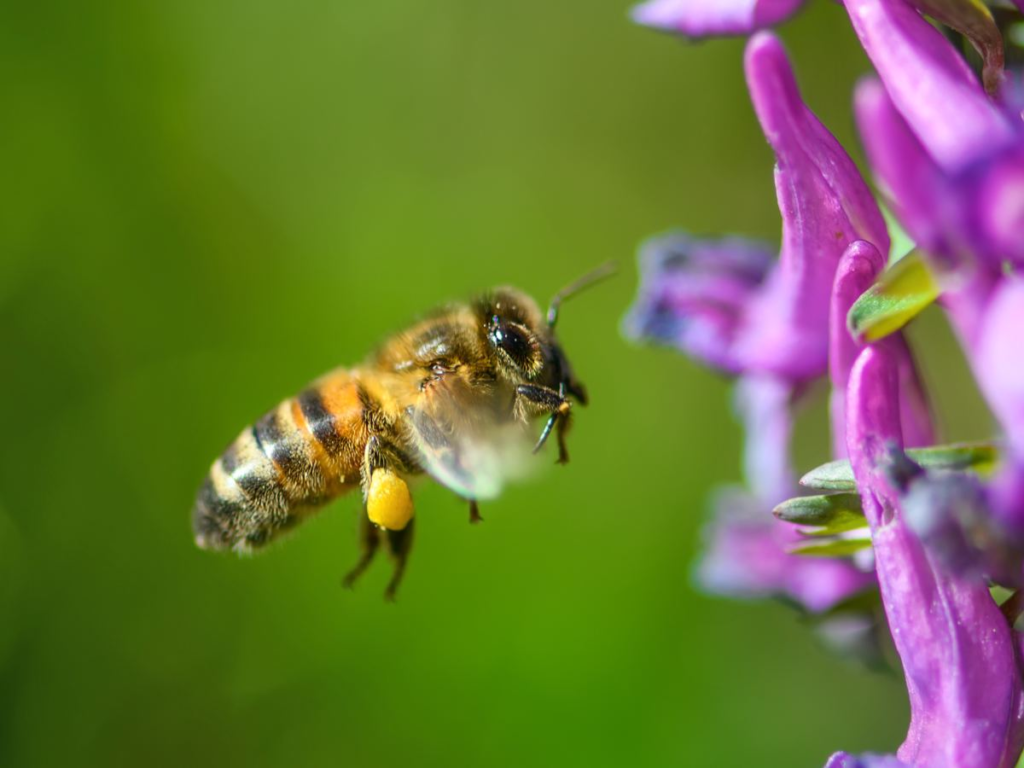Explore the fascinating winter survival tactics employed by honeybees in their three-month slumber party. Gain insights into their environment.
The winter survival strategies of honeybees : Introduction
Have you ever wondered where honeybees go during the winter months? Most people in temperate climates have likely never seen a honeybee buzzing around in the winter chill. Unlike humans with blankets, fires, and adjustable thermostats, honeybees have developed unique survival strategies to endure the cold temperatures. Let’s explore the fascinating world of honeybee winter clusters and the intricate dance of survival they perform during the colder months.
ALSO READ : Africa’s Vultures In Peril : A Grim Outlook For The Continent’s Raptors

The winter cluster
When temperatures drop below 50 °F (10 °C), honeybees retreat to their hives and form what can be described as a giant three-month slumber party. This winter cluster is not a festive gathering, but rather a survival mechanism. The fate of the entire hive hinges on the preparations made by the winter population, which includes a robust assembly of winter-ready bees, ample honey stores, and a secure hive.

Winter-ready Bees
The bees that make up the winter cluster are different physiologically from their summer counterparts. They are a bit more plump, helping to generate and retain heat, and have a longer lifespan, lasting 4–6 months instead of just a few weeks. These adaptations ensure that the hive remains active and warm throughout the winter, even in the absence of the male drones.

The shift in social dynamics
The social structure of honeybees, usually divided into workers, drones, and queens, undergoes a significant change during the winter. The male drones, having served their purpose, die off, leaving only the female castes – the workers and the queen. The all-female swarm congregates tightly to form the winter cluster, with the queen residing at the warmest core, while the workers tirelessly shake and shiver around her to maintain a survivable heat.

Temperature regulation in the cluster
The winter cluster is a remarkable display of collaboration and organization. At the center of the cluster, temperatures can soar to 90–100 °F (32–37 °C), providing a comfortable environment for the queen. Meanwhile, at the surface or mantle of the cluster, temperatures hover around 50 °F, allowing the worker bees to manage their energy efficiently. The cluster moves in formation around the hive, crawling and climbing to reach honey reserves, ensuring a steady supply of food to sustain themselves and the vital heat they generate.

Brief ventures outside
While the winter cluster remains mostly intact throughout the colder months, there are moments when the bees venture outside. When temperatures rise above 50 °F, bees leave the hive momentarily to relieve themselves of waste. This brief break from the cluster is a testament to their adaptability to changing weather conditions.

Year-round activity in warmer climates
In regions where temperatures rarely, if ever, drop below 50 °F, honeybee colonies continue working all year-round. The absence of a distinct winter cluster allows these colonies to maintain a more constant level of activity, with bees foraging for food and performing their hive duties throughout the seasons.

Conclusion
The winter survival strategies of honeybees are a testament to the resilience and adaptability of these remarkable insects. The formation of the winter cluster, the physiological adaptations of winter-ready bees, and the collaborative efforts within the hive showcase the intricate dance of survival that unfolds during the colder months. As we marvel at the complexity of honeybee societies, it becomes clear that these industrious insects have developed sophisticated mechanisms to ensure the survival of their colonies in the face of challenging winter conditions.
To explore more news : Click Here
ALSO READ : Salvador Dali’s “The Persistence Of Memory” : A Surreal Exploration Of Time And Consciousness




































